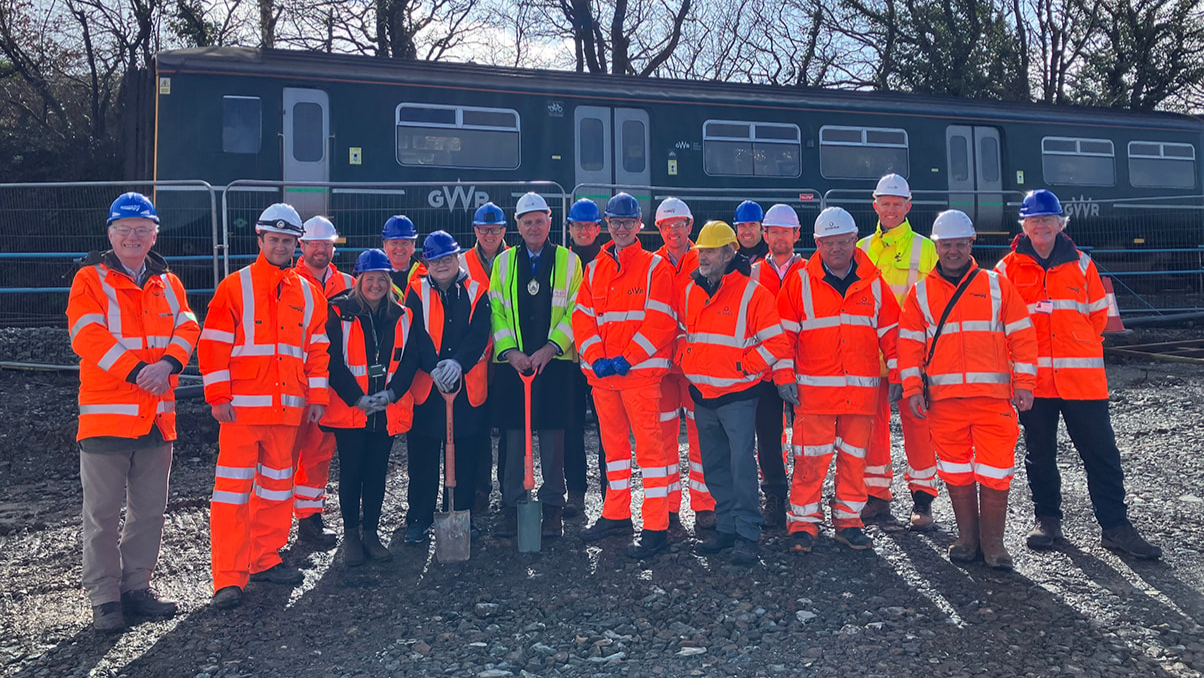UK construction output sees continued growth while infrastructure order book booms | New Civil Engineer

The UK construction industry displayed a slight growth of 0.1% in September 2024, according to the latest figures from the Office of National Statistics (ONS), with infrastructure showing some of the healthiest returns.
The minimal rise for the construction sector as a whole follows a relatively stronger growth of 0.6% in August 2024, which was an upward revision from a previously reported 0.4% increase. However, July 2024 presented a setback, with the industry experiencing a 0.4% contraction.
For the third quarter of 2024, construction output increased by 0.8%, equating to a £444M rise. This quarterly upturn was solely driven by a 2.0% boost in new construction work, while repair and maintenance activity slipped by 0.6%.
Eight out of nine sectors contributed to this growth, prominently led by a 2.8% rise (£213M) in infrastructure new work and a 2.6% increase (£298M) in non-housing repair and maintenance new work.
Conversely, the private housing repair and maintenance sector declined by 5.8%, marking it as the only negative contributor to the overall quarterly performance.
Despite September’s modest gains, which saw a £15M increase compared to August, the volume of construction output for the month totalled £17.65bn. Four of the nine sectors recorded improvements, with private housing repair and maintenance and infrastructure new work making notable contributions.

However, the industry is grappling with a significant drop in new construction orders. Quarter 3 2024 witnessed a substantial 22.0% decrease in total new orders compared with the previous quarter. This decline amounts to a £2.72bn shortfall and represents the lowest level of new orders since the final quarter of 2023.
Particularly affected were non-housing new orders, which fell by 18.3%, driven largely by a decrease in private commercial projects, notably in offices, entertainment, and retail spaces. Public sector new orders declined by 28.0%, with housing projects suffering the most. Private housing orders dropped by 31.3%, while public housing saw a 40.5% reduction.
The construction industry also saw a 2.0% increase in prices over the 12 months to September 2024, as indicated by the Construction Output Price Index (OPI).
Renewable energy sees infrastructure boom in October
Meanwhile, Barbour ABI data highlighted a robust performance in the UK’s infrastructure sector, which posted a triple-digit increase for the second consecutive month in October.
Approvals for infrastructure projects surged by 298%, following a 136% rise in September, with green energy initiatives driving the upward trend.
The UK’s largest infrastructure approvals in October were worth around £3.5bn in total and included:
- Ossian Offshore Wind Farm (3.6GW) – Scotland
- Stanlow HyNet Hydrogen Production Plant – North West
- Cottam Solar ProjectEast (600MW) – Midlands
- The Balk, Almholme – Solar Farm (49.9MW) and Energy Storage System – Yorkshire and Humber
- Bob Lane Battery Energy Storage System (264MW) – South East
Barbour ABI data also showed significant growth in commercial and retail projects during October, with contract awards rising by 189% to £1.1bn, while residential awards climbed by 41% as the housing sector looks towards recovery. The positive trend in green energy planning application approvals indicates a continued government commitment to transitioning towards sustainable energy solutions.
The wider construction industry saw 44% and 59% gains in monthly approvals. in September, brand new applications also appear to be following the trend with a 18% increase in infrastructure projects entering the planning system, led by a series of battery storage projects and wind farms.
These contrasting dynamics within the construction sector highlight the challenges and opportunities facing the industry as it navigates fluctuating demand and evolving market conditions.
Reaction
Aecom head of programme, project and cost management Scott Motley said: “The sector’s impressive run of form continues, and firms will be encouraged by the pipeline of new work available to help stem the traditional winter slowdown.
“If it wasn’t clear before, yesterday’s Mansion House speech shows that infrastructure investment is the cornerstone of the government’s plans for economic growth. The task for the sector will be seizing on these opportunities effectively and helping align private funding with public sector investment so that schemes get on-site quickly.
“Healthcare, transport and education continue to be the three priority areas for work, both new-build and retrofit. Despite the prospects of increasing labour costs, bigger order books and a more certain pipeline of new work should help to offset any concerns and put firms on the front foot heading into 2025.”
Barbour ABI head of business and client analytics Ed Griffiths said: “Another mega month for renewable energy approvals demonstrates the laser focus the Labour government has on driving through a green energy transition at all costs.
“We’ve seen a string of massive approvals in recent months, including one of the largest solar farms on record. The government seems intent on leaving the flood gates open to these kinds of project, even as protests mount about their potential impact on the countryside.”
Bloom Building Consultancy director Josh Ward-Jones said: “After a weak first half of the year, construction has surged to become the fastest growing industry in Britain’s slowing economy.
“But construction’s bragging rights come with caveats. The expansion posted in the third quarter came after three successive quarterly falls, so while the turnaround is welcome, total output is still down on where it was at this point in 2023.
“There’s also a two-speed feel to the industry data, with private sector housebuilding stuck in reverse as high interest rates continue to hold back developers’ willingness to buy land and build homes.
“The picture is even more alarming when you look at the pipeline. The value of new orders placed by private sector housebuilders fell by a third on the quarter, and is down by a painful 34.4% compared to Q3 2023.
“Such a sharp slowdown in developer demand for residential construction underscores the huge task the Chancellor faces in her quest to re-energise housebuilding.
“Labour has promised to ‘get Britain building again’ and get 1.5M more homes built in England over the next five years. The sector now awaits with interest the planning reforms and release of green belt land the Government says will kickstart housebuilding in areas where people want to live.
“Things are more positive in commercial real estate. New orders for commercial construction in the third quarter were up a modest 2.8% compared to Q3 2023, but levels of repair and maintenance work rose strongly.
“On the front line we’re seeing strong demand from commercial property landlords keen to invest in repair and refurbishment to generate extra value from existing buildings.
“Infrastructure and civil engineering builders are licking their lips at the prospect of the huge projects announced in last month’s Budget, but for many housebuilders the elephant in the room remains the high cost of borrowing and all eyes will be trained on the Bank of England to see if it will reduce interest rates further to help boost Britain’s flagging economy.”
Like what you’ve read? To receive New Civil Engineer’s daily and weekly newsletters click here.
Related
Major military infrastructure upgrade completed at Leuchars
Upgraded facilities have been delivered for The Royal Scots Dragoon Guards and 2nd Battalion Royal Electrical and Mechanical Engineers, including refurbished o
UK public EV charge points surpass 75,000 as infrastructure booms
The UK’s electric vehicle (EV) charging infrastructure has hit a significant milestone, with the number of public charge points surpassing 75,000. According t
Infrastructure firm strengthens UK presence with Brierley Hill warehouse |…
National infrastructure service provider MJ Quinn has secured a newly refurbished industrial site in Brierley Hill as part of its ongoing UK ex
UK: Work Begins on New Railway Station in Okehampton
Initial work has begun to build a new railway station in Okehampton, Devon. The new 15 million GBP station, named Okehampton Interchange, will connect We













